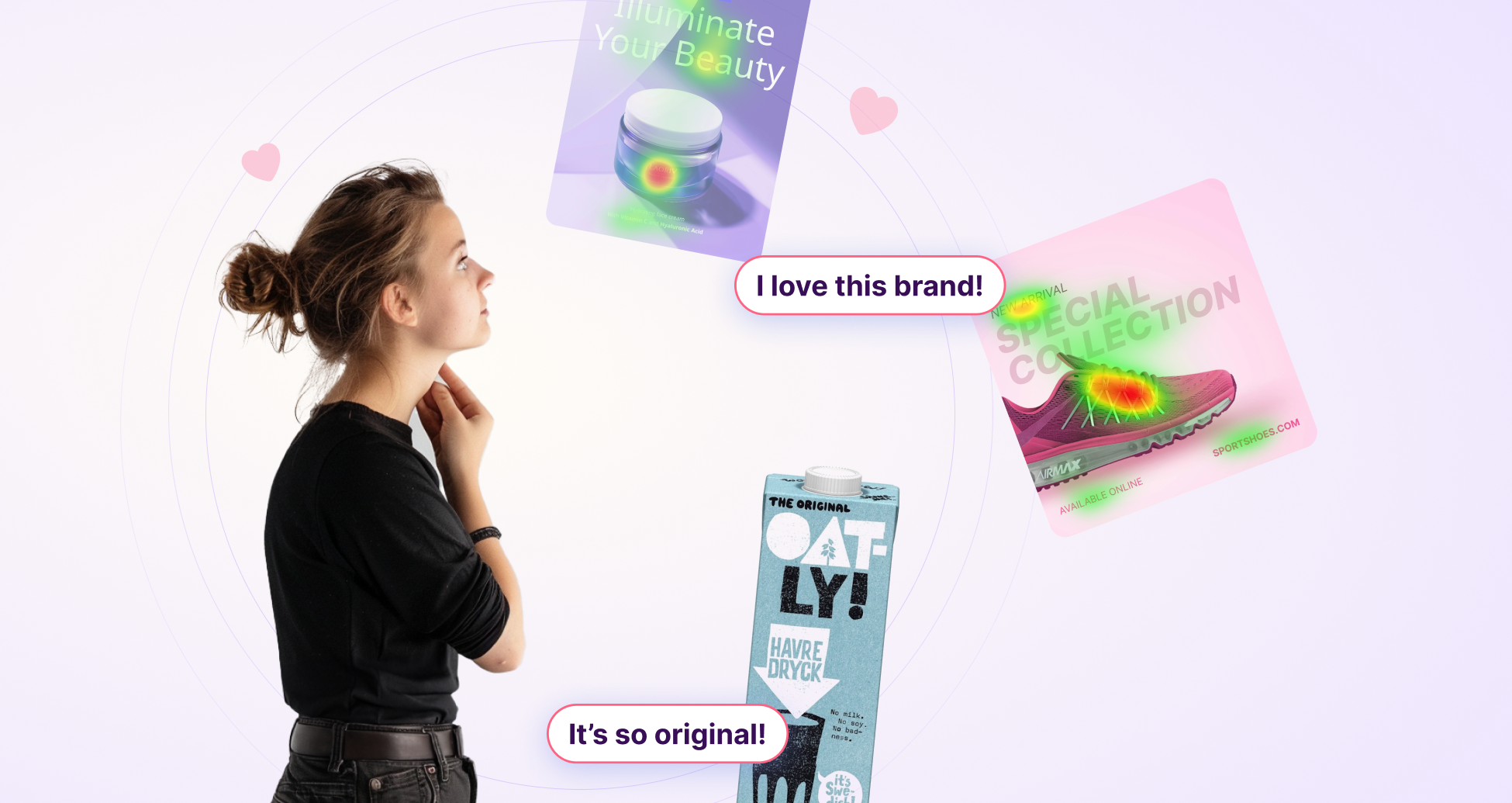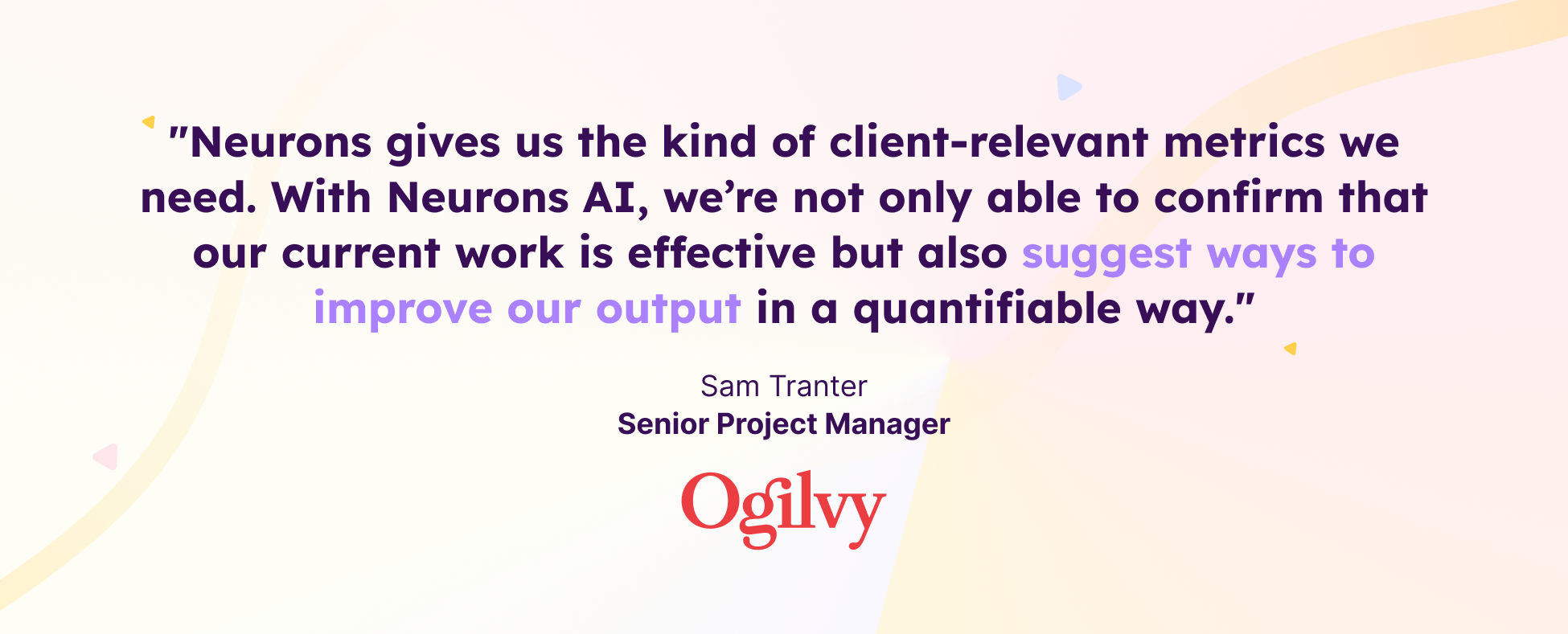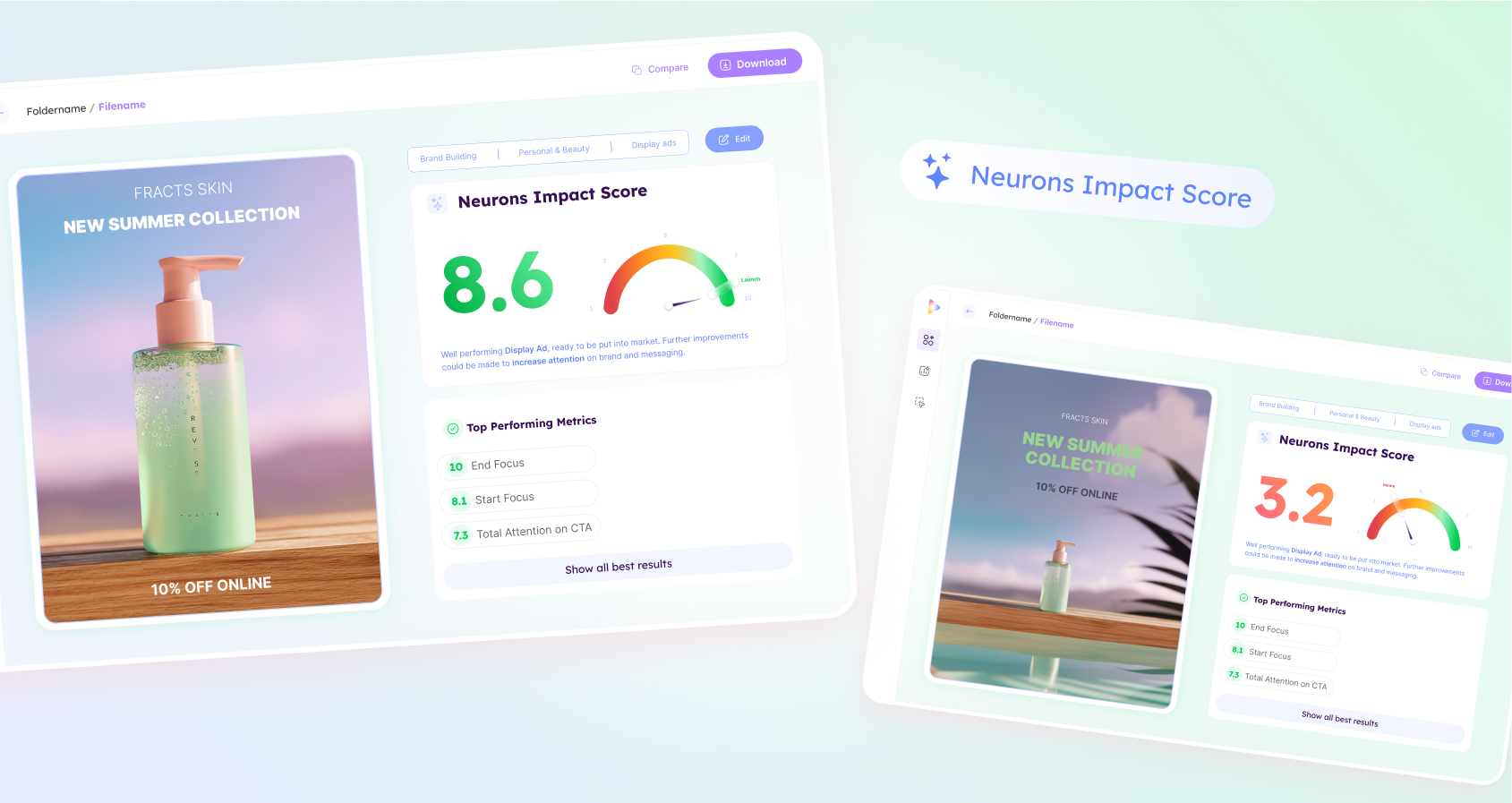
Creative testing helps advertisers identify which ad variations perform best—before launching a campaign. Whether you're optimizing for attention, engagement, or conversion, early creative testing reduces guesswork, saves budget, and drives better results.
While traditional methods like A/B testing, surveys, and focus groups still play a role, predictive ad testing software like Neurons AI now lets teams simulate and score ad performance in minutes—without live media spend.
For understanding how creative testing fits into broader advertising strategies, read our comprehensive ad testing article here.

Creative testing in advertising is the process of evaluating and comparing variations of ad creative to identify which version drives the highest attention, engagement, or conversions before launching a campaign.
Creative testing focuses on specific elements within an ad—such as imagery, messaging, layout, color, and call-to-action (CTA)—to understand how these visual and verbal cues influence audience behavior. Advertisers use creative testing to reduce guesswork, validate assumptions, and improve campaign performance with data-backed decisions.
Traditional creative testing methods rely on surveys, focus groups, or live A/B testing after launch. In contrast, modern approaches now use predictive models to simulate how audiences will respond to an ad before spending media budget.
Neurons AI enables predictive creative testing through its neuroscience-based platform. By simulating human attention and engagement in real time, marketers receive instant insights into which creative will perform best—without waiting weeks for in-market results.
Using tools like Neurons AI, teams can upload multiple ad variations and instantly see which one captures the most attention, drives brand recall, or holds viewer focus.

Creative testing performance directly impacts return on ad spend (ROAS), audience engagement, and long-term brand growth. Ads with high-performing creative elements consistently generate more clicks, conversions, and attention—while reducing waste on underperforming campaigns.
There are 5 key reasons why creative testing matters for advertisers, listed below.
Neurons AI supports each of these outcomes by offering predictive, neuroscience-backed insights within minutes. Instead of waiting weeks for post-launch results, advertisers can evaluate creative assets in advance.
Neurons forecasts which ad captures the most attention and drives the strongest cognitive responses—helping teams move forward with clarity and confidence.
Brands run creative testing through a mix of traditional and digital methods designed to measure the performance of ad variations before or during a campaign. Find more examples and a detailed deep dive into ad testing methods here.
There are 4 common creative testing approaches listed below.
While these approaches can be useful, they are often slow, resource-intensive, and reactive. That’s where predictive tools change the game.
Neurons AI helps brands test creative assets before launch—without needing real-world spend or waiting weeks for results. By simulating how audiences will perceive and interact with each creative, Neurons Predict allows teams to upload variations and receive attention heatmaps, performance scores, and engagement forecasts in minutes.
This pre-market testing process helps brands:


Creative testing doesn’t need to slow down campaign timelines. In fact, with the right tools and workflows, it can be one of the fastest parts of the ad production cycle.
To speed up creative testing, marketers should focus on three areas: early testing, fewer approval bottlenecks, and smarter feedback loops.
Many teams wait until after launch to test creatives through live performance. But by then, budget has already been spent. Testing creative assets before a campaign goes live helps marketers avoid expensive underperformance. Neurons AI enables teams to upload creative variations and get predictive insights—such as attention heatmaps and cognitive impact scores—within minutes, not weeks.
Creative review rounds can get stuck in opinion-based debates. Predictive testing helps break the cycle by grounding conversations in data. When teams see that one version draws more attention or holds viewers longer, it’s easier to move forward. Neurons AI helps reduce subjective back-and-forth by providing clear visual feedback everyone can align around.
Instead of treating testing as a post-production step, high-performing teams use it throughout the creative process. For example, early concept testing can help decide which ideas to develop. Mid-production feedback can highlight small tweaks that improve performance. And pre-launch testing ensures only the strongest ads go live. Neurons AI supports this end-to-end workflow, making it easy to plug testing into every stage of the creative pipeline.
By testing early, reducing friction, and bringing clarity to creative decisions, teams can speed up the entire process—while also increasing the odds of campaign success.
Running a creative test is easy. Running a useful one requires structure, clarity, and the right tools. Whether you're optimizing for attention, conversions, or brand lift, there are a few principles that consistently lead to better results.
6 best practices that help advertisers get the most from creative testing are listed below.
1. Test one variable at a time
To isolate what’s driving performance, keep variations focused. Change only the headline, image, CTA, or layout—not all at once. This helps you understand why one creative outperforms another.
2. Set clear success metrics
Before running a test, define what success looks like. Are you optimizing for click-through rate (CTR)? Engagement time? Brand recall? With tools like Neurons AI, you can track predicted attention and memory response—two leading indicators of ad effectiveness.
Find a comperehensive list of metrics used for ad testing here.
3. Run tests early in the process
Testing shouldn't be the last step before launch. High-performing teams use creative testing during concept development, storyboarding, and design iterations. Early signals save time and help teams align before production costs escalate.
4. Use data to guide—not dictate—creative decisions
Creative work is still creative. Testing should inform choices, not eliminate judgment. Look at heatmaps, attention scores, and performance predictions as a way to prioritize and refine—not to “design by numbers.”
5. Don’t aim for perfection—aim for clarity
The goal of testing is to learn and improve. It's okay if some variants perform poorly—they reveal what not to do. The most useful tests help teams eliminate weak options and move forward with more confidence.
6. Repeat and evolve
Audience preferences shift. Platform trends change. What worked last quarter might not land today. Treat creative testing as a regular part of your production cycle—not a one-time event. With predictive tools like Neurons AI, it’s fast enough to build into every campaign sprint.
The table below summarizes what advertisers should pay attention to when running creative testing.
Creative testing isn't just about picking the "prettiest" ad. It’s a strategic lever for performance. When used early and often, it improves ad effectiveness, speeds up production, and helps creative teams align quickly. Neurons AI makes this process faster, scalable, and backed by neuroscience. If you're ready to take the guesswork out of creative development, now’s the time to test smarter.